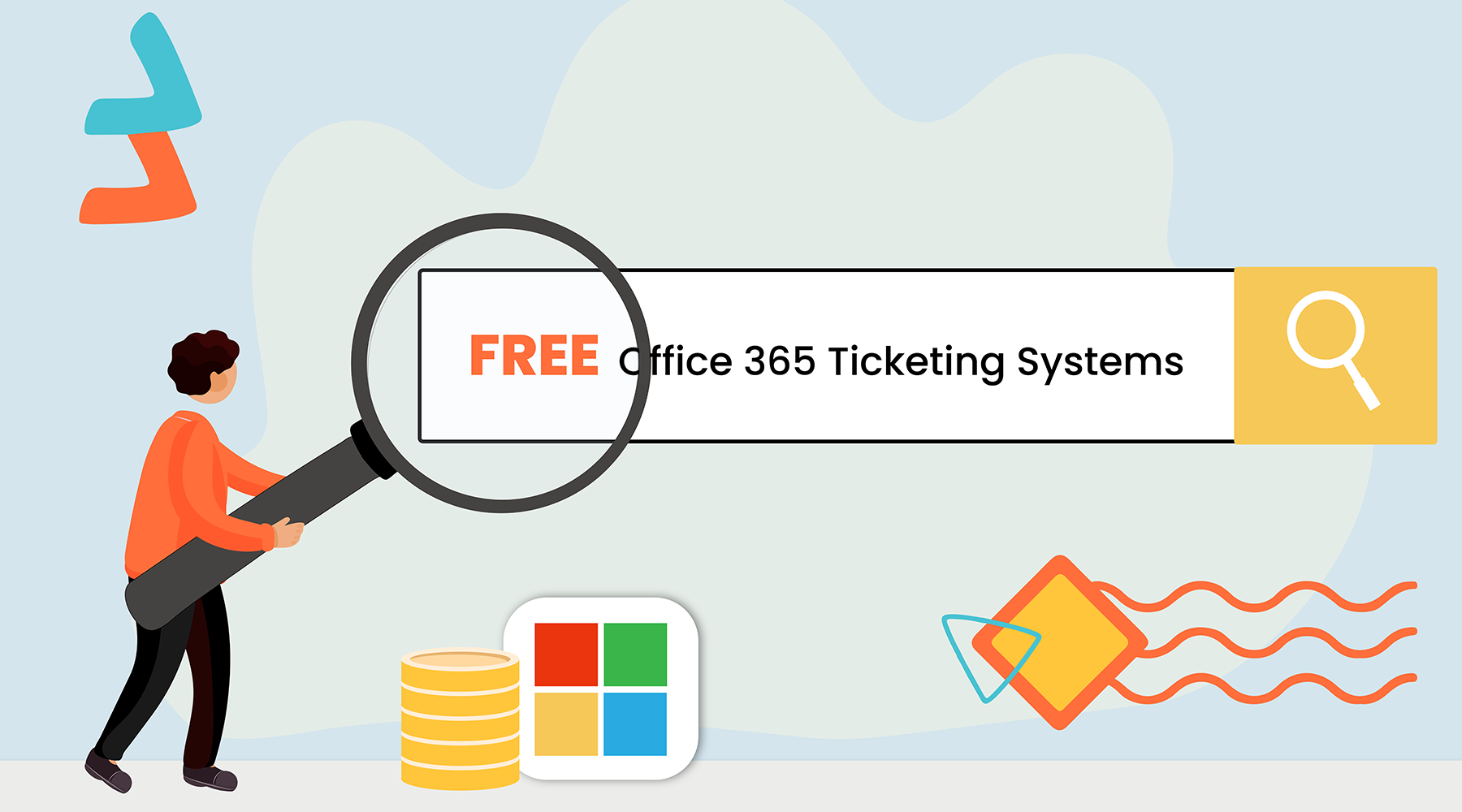Yes—there are a few limited options and free ways to set up basic ticketing within the Office 365 ecosystem using tools like Microsoft Forms, Power Automate, and SharePoint Lists. These free office 365 ticketing systems options are suitable for small teams or organizations with technical resources, but they often come with tradeoffs in scalability, usability, and support.
Free Ticketing Systems Compatible with Office 365: What Exists?
When searching for a free ticketing system for Office 365, many organizations are looking for tools that work within their existing Microsoft 365 stack—ideally without needing to purchase an additional subscription or platform.
Here are the most common free options available:
- Microsoft Forms + Power Automate: This is a low-cost way to collect requests and route them to the appropriate place. Forms can be embedded in Teams or on SharePoint pages, and Power Automate can trigger email notifications, create tasks, or populate a SharePoint list.
- Microsoft Lists or SharePoint: These can act as a centralized repository of requests, with team members updating statuses manually or through workflows.
- Planner for Task-Based Support: While not a traditional ticketing system, some teams use Planner to track incoming tasks, assign owners, and update progress.
- Free Tiers of Third-Party Tools: Platforms like Freshdesk, Zoho Desk, or Spiceworks offer free versions of their help desk software, though they often require switching between systems and lack native integration with Microsoft Teams. For example, Jira Service Desk provides a free version for up to three agents but only integrates with Teams via third-party apps. It does not work natively inside the Teams app.
- Some Microsoft 365-focused tools like HelpDesk 365 may offer limited free versions, often restricted to a single agent or basic functionality—though availability can vary.
What You Get (and Don’t Get) with Free Office 365-Compatible Ticketing Systems
What Works Well
- No additional cost beyond your existing Microsoft 365 subscription
- Familiar user experience for employees already working in Outlook, Teams, or SharePoint
- Fast setup for small teams with low request volume
- Flexibility for teams with technical expertise in Microsoft’s Power Platform
Where Free Systems Fall Short
- Manual effort: Many “solutions” are DIY and require regular maintenance
- No true incident/ticket management: Most setups don’t support SLA tracking, categorization, or ticket lifecycle reporting
- Lack of automation: Basic workflows can be created, but more complex routing or AI-based triage isn’t feasible
- Scalability issues: What works for one team breaks down quickly when multiple departments need support
- Limited support and documentation: Especially for homegrown or hybrid setups
Who Are Free Ticketing Systems Best For?
Free and DIY Office 365 ticketing solutions can work well for:
- Small, centralized teams with low ticket volumes
- Startups or nonprofits who need a short-term solution
- Technically savvy teams who are comfortable building and maintaining automation in-house
If your team has Power Platform experience, you may be able to build and manage a DIY system using:
- Microsoft Forms – for collecting user input
- Power Automate – for triggering flows like email alerts or item creation
- Microsoft Lists – for tracking requests and progress
But even with these tools, teams often hit a ceiling once requests become more complex or span departments. As needs grow, some teams explore lightweight paid alternatives, like Tikit, that provide a Microsoft Teams-native experience, scale across departments, and deliver custom workflows and automations.
When to Consider a Paid Alternative Like Tikit
While free tools can work well for small teams or basic needs, they often come with limitations around customization, scalability, and long-term support. For organizations that need a more unified, multi-department solution that grows with them, it may be worth considering reasonably priced alternatives that are still Microsoft-native—like Tikit.
Why Some Teams Choose Tikit
Tikit was built from the ground up to work inside Microsoft Teams—no switching tabs or learning a new interface. It offers:
- AI-powered self-service and ticket deflection to reduce response time
- Cross-departmental visibility, allowing teams like IT, HR, Facilities, and Finance to operate from one unified platform
- No-code setup with free onboarding and configuration support
- Automation, forms, and templates that reduce manual overhead
- Built-in reporting and SLA tracking to measure performance and drive improvement
Because Tikit runs within Microsoft Teams, it meets users where they already work—reducing friction and increasing adoption from day one.
Want to see how it compares? Explore Tikit and see what’s possible beyond free workarounds.
Final Thoughts – To Free, or Not to Free?
If you’re looking for a basic solution, there are free Office 365 ticketing systems available that may fit the bill. Free options can be great for testing ideas or handling light workloads, especially if your team has the bandwidth to build and maintain workflows with Power Platform tools.
However, as your organization grows—or your ticketing needs become more sophisticated—it’s worth considering purpose-built ticketing solutions that offer native Microsoft integration, multi-department support, and long-term scalability.
Tikit provides that middle ground: not enterprise-priced, not bare-bones—just a well-designed tool that grows with your team.


